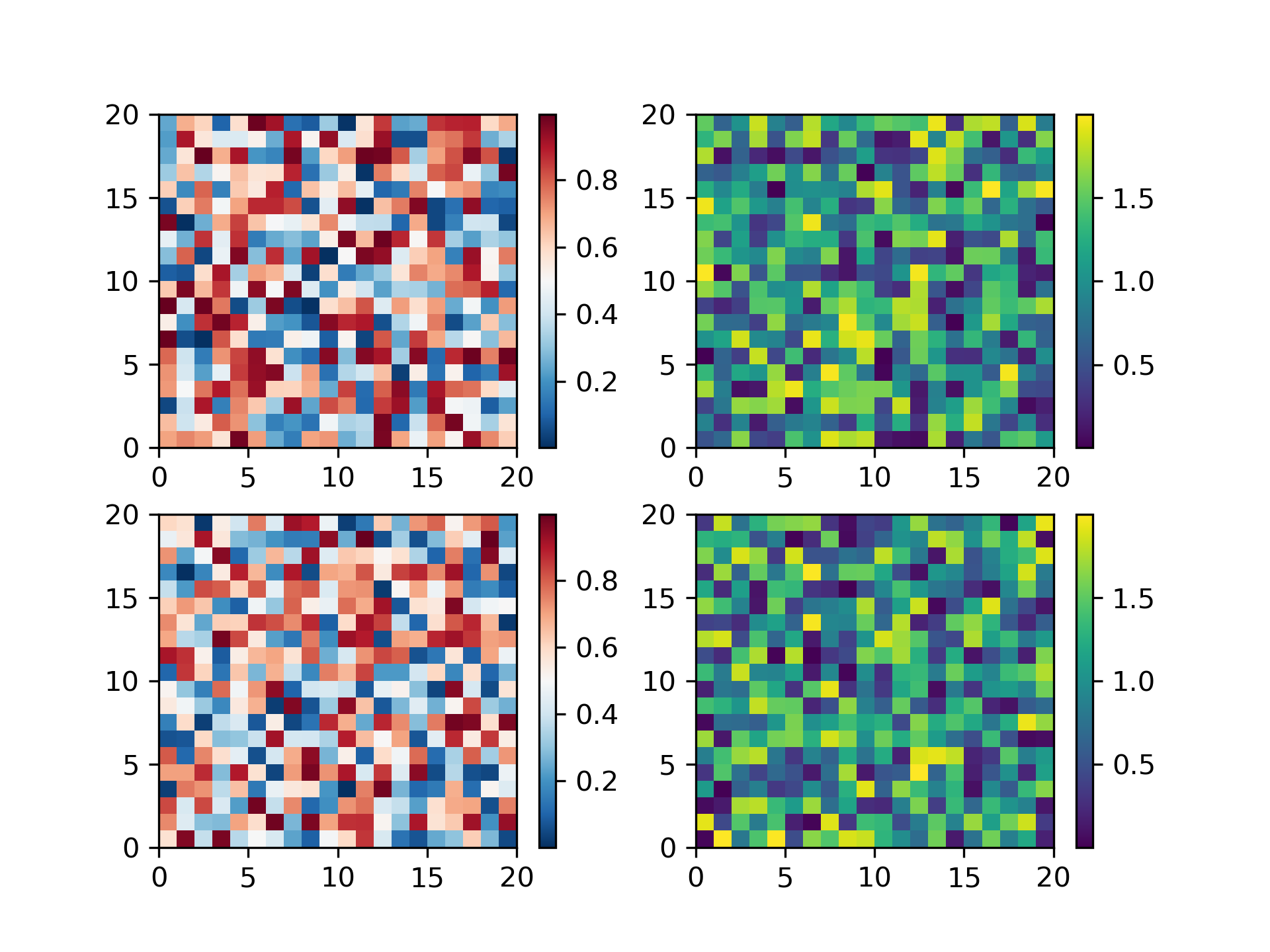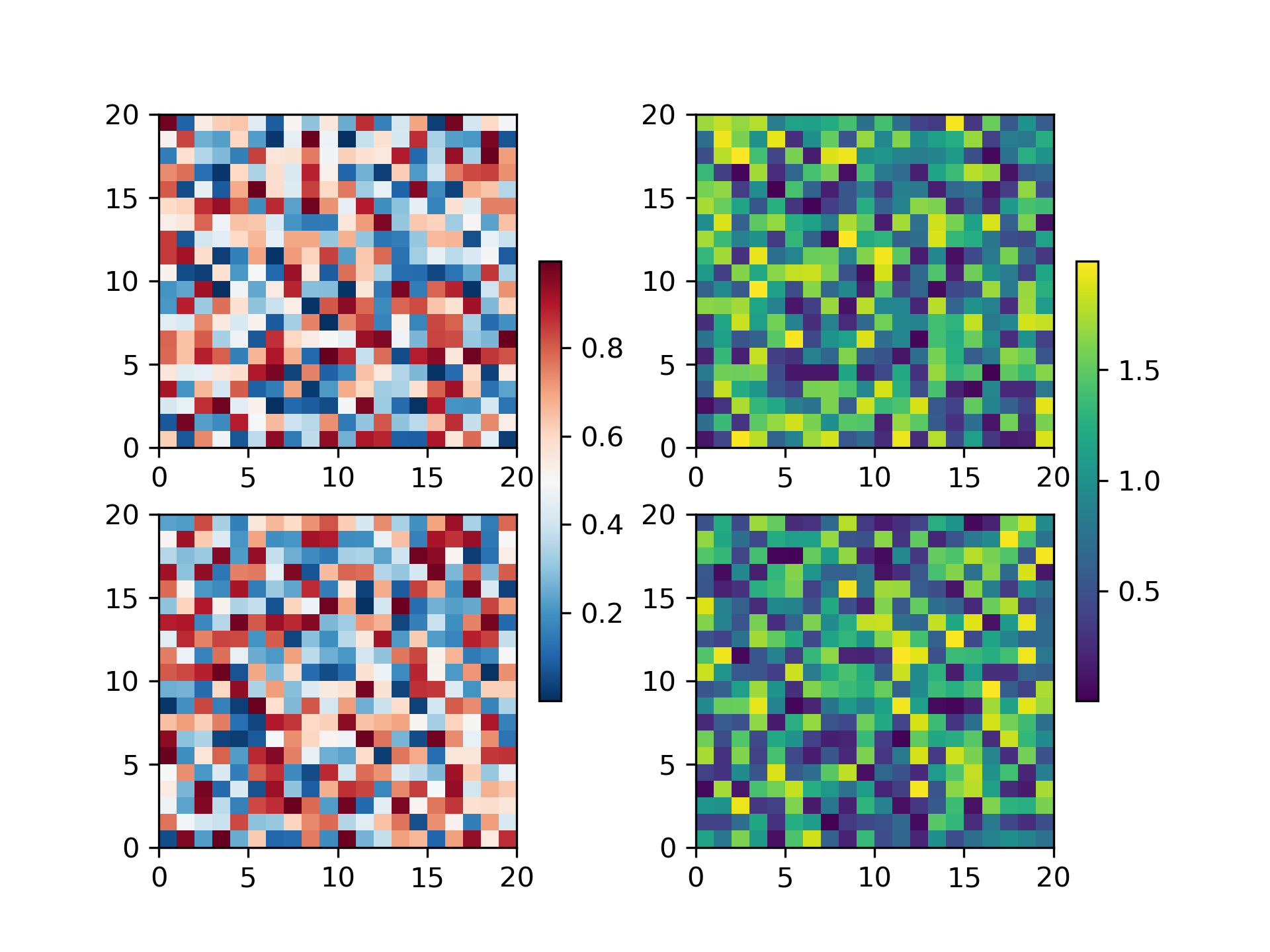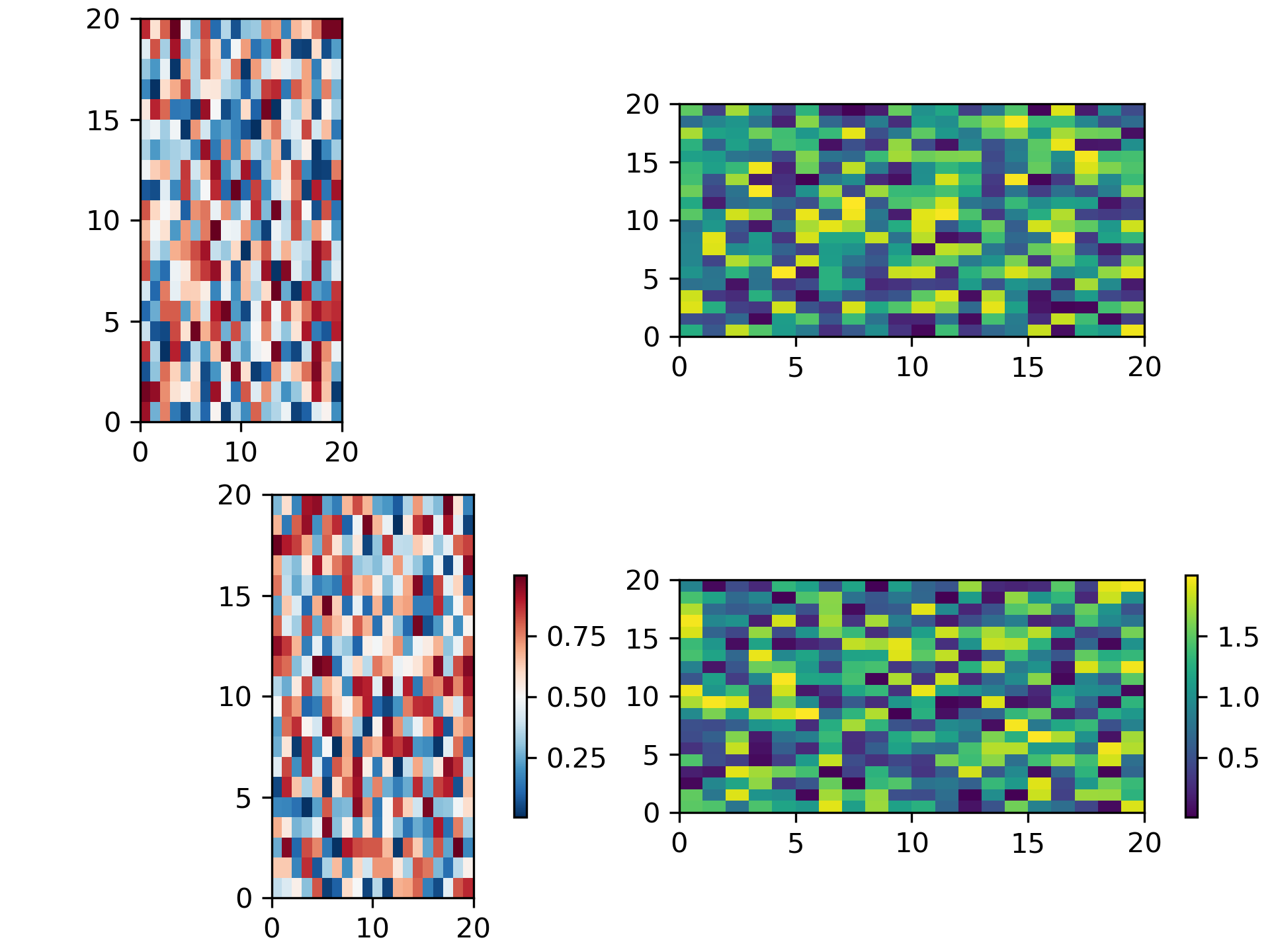>>> """
=================
Placing Colorbars
=================
Colorbars indicate the quantitative extent of image data. Placing in
a figure is non-trivial because room needs to be made for them.
The simplest case is just attaching a colorbar to each axes:
"""
... import matplotlib.pyplot as plt
... import numpy as np
...
...
... # Fixing random state for reproducibility
... np.random.seed(19680801)
...
... fig, axs = plt.subplots(2, 2)
... cmaps = ['RdBu_r', 'viridis']
... for col in range(2):
... for row in range(2):
... ax = axs[row, col]
... pcm = ax.pcolormesh(np.random.random((20, 20)) * (col + 1),
... cmap=cmaps[col])
... fig.colorbar(pcm, ax=ax)
... plt.show()
...
... ######################################################################
... # The first column has the same type of data in both rows, so it may
... # be desirable to combine the colorbar which we do by calling
... # `.Figure.colorbar` with a list of axes instead of a single axes.
...
... fig, axs = plt.subplots(2, 2)
... cmaps = ['RdBu_r', 'viridis']
... for col in range(2):
... for row in range(2):
... ax = axs[row, col]
... pcm = ax.pcolormesh(np.random.random((20, 20)) * (col + 1),
... cmap=cmaps[col])
... fig.colorbar(pcm, ax=axs[:, col], shrink=0.6)
... plt.show()
...
... ######################################################################
... # Relatively complicated colorbar layouts are possible using this
... # paradigm. Note that this example works far better with
... # ``constrained_layout=True``
...
... fig, axs = plt.subplots(3, 3, constrained_layout=True)
... for ax in axs.flat:
... pcm = ax.pcolormesh(np.random.random((20, 20)))
...
... fig.colorbar(pcm, ax=axs[0, :2], shrink=0.6, location='bottom')
... fig.colorbar(pcm, ax=[axs[0, 2]], location='bottom')
... fig.colorbar(pcm, ax=axs[1:, :], location='right', shrink=0.6)
... fig.colorbar(pcm, ax=[axs[2, 1]], location='left')
... plt.show()
...
... ######################################################################
... # Colorbars with fixed-aspect-ratio axes
... # ======================================
... #
... # Placing colorbars for axes with a fixed aspect ratio pose a particular
... # challenge as the parent axes changes size depending on the data view.
...
... fig, axs = plt.subplots(2, 2, constrained_layout=True)
... cmaps = ['RdBu_r', 'viridis']
... for col in range(2):
... for row in range(2):
... ax = axs[row, col]
... pcm = ax.pcolormesh(np.random.random((20, 20)) * (col + 1),
... cmap=cmaps[col])
... if col == 0:
... ax.set_aspect(2)
... else:
... ax.set_aspect(1/2)
... if row == 1:
... fig.colorbar(pcm, ax=ax, shrink=0.6)
... plt.show()
...
... ######################################################################
... # One way around this issue is to use an `.Axes.inset_axes` to locate the
... # axes in axes coordinates. Note that if you zoom in on the axes, and
... # change the shape of the axes, the colorbar will also change position.
...
... fig, axs = plt.subplots(2, 2, constrained_layout=True)
... cmaps = ['RdBu_r', 'viridis']
... for col in range(2):
... for row in range(2):
... ax = axs[row, col]
... pcm = ax.pcolormesh(np.random.random((20, 20)) * (col + 1),
... cmap=cmaps[col])
... if col == 0:
... ax.set_aspect(2)
... else:
... ax.set_aspect(1/2)
... if row == 1:
... cax = ax.inset_axes([1.04, 0.2, 0.05, 0.6], transform=ax.transAxes)
... fig.colorbar(pcm, ax=ax, cax=cax)
... plt.show()
...









